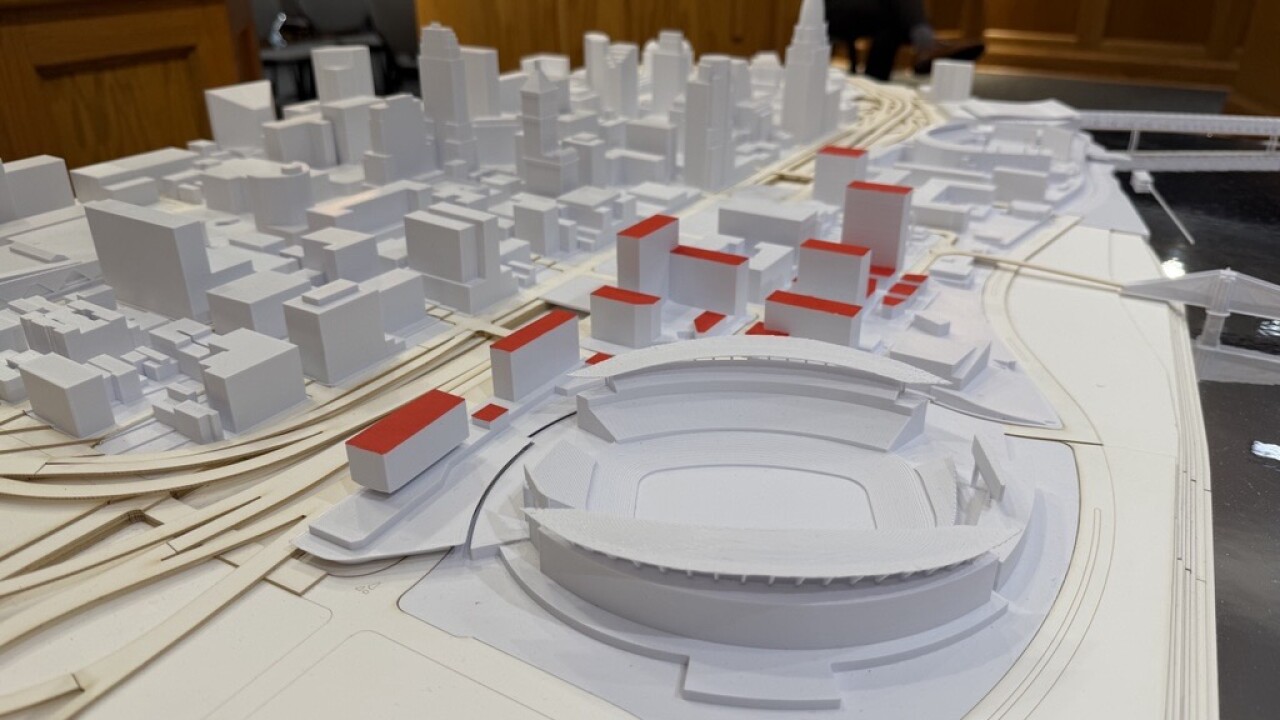CINCINNATI — City and county leaders will get a first look at a new design plan to finally develop empty lots at The Banks and improve the riverfront today.
The Banks urban plan update was presented at the Hamilton County Commissioners’ staff meeting Tuesday morning.
Ahead of the meeting, a 3D model sat in the middle of the Hamilton County Commissioners' meeting room.
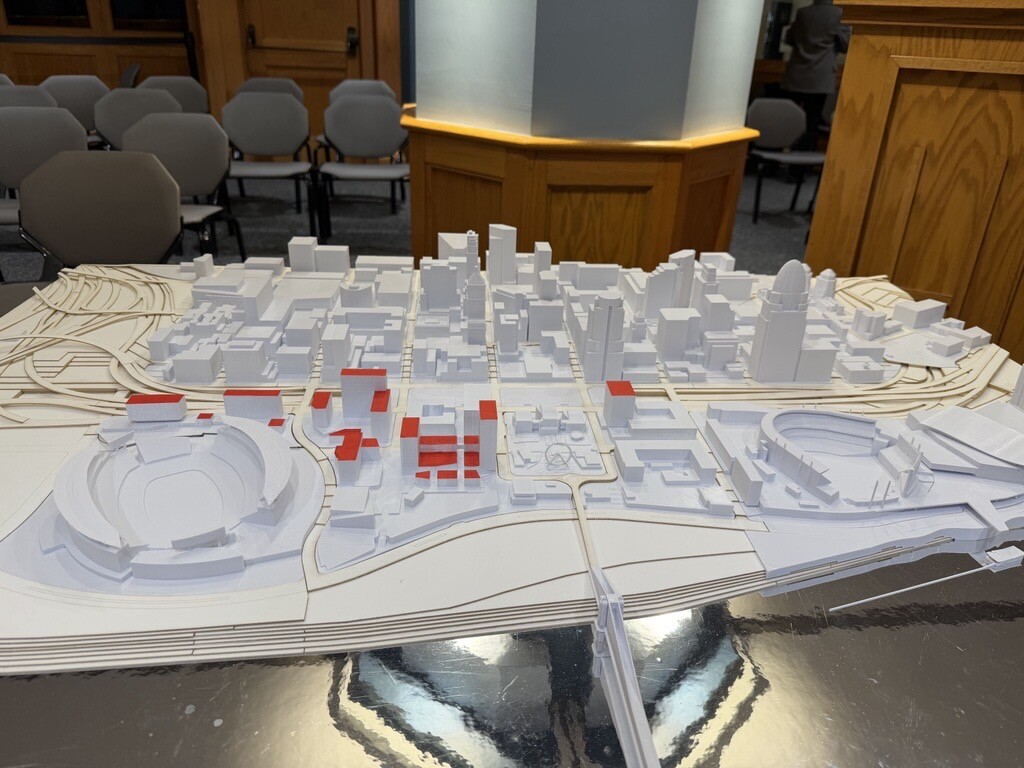
The presentation shows the plans have changed a bit since our I-Team obtained preliminary images from a June 24th presentation to The Banks Urban Design Steering Committee.
The new plan shows the addition of several different plaza spaces dotted throughout the riverfront, including a tailgate plaza near the river and a new fan plaza near Paycor Stadium.
It also includes new plazas outside of the National Underground Railroad Freedom Center and near the Black Music Walk of Fame. The plaza outside of the Freedom Center, under this proposal, would also include the potential for a "festival street" on Freedom Way, which could be closed to traffic for large-scale events.
Developers also proposed a place for a permanent Ferris wheel on the southern end of the Freedom Center plaza.
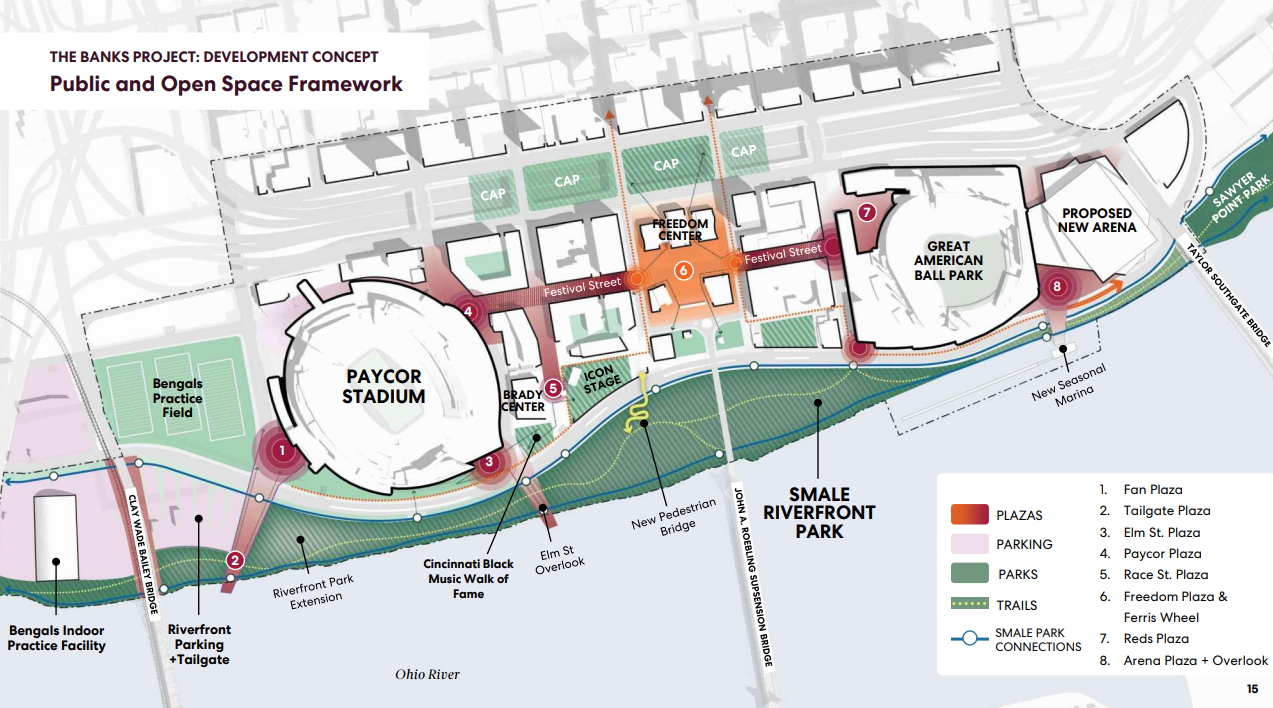
Ideas that were little changed from the June presentation included building high-rise mixed-use complexes near Paycor Stadium that would include residential and retail space, along with an area designated for a new hotel.
Those high-rises would create what the developers called a "stepped skyline" around Paycor Stadium.
Overall, developers said they aimed to create over 1,000 new luxury and market-rate condos in the high-rises, while retail operations would occupy the ground level. Office space was not highly prioritized, because developers said the current market demand doesn't support expanding that type of space.

The high-rise buildings would also add roughly 2.1 to 2.5 million square feet of new vertical development at The Banks, developers said.
In all, the developers said they expected all the changes proposed for The Banks would be a roughly 5-15-year endeavor, with some lots being fully developed in around 10 years based on the current market.
The overall cost to develop five of the parcels proposed would be $750 to $800 million, and would require public subsidies to offset, according to the proposal.

Following the presentation, all three Hamilton County commissioners were highly critical of the plan proposed.
Hamilton County President Denise Driehaus expressed concern about the height of the high-rise buildings proposed and whether a new hotel at The Banks was necessary.
Stephanie Summerow-Dumas immediately said she doesn't believe developing The Banks is a priority for the county right now.
"I believe that we need to put something on those lots, but this is not a priority for me," said Dumas. "It's been 25 years, maybe it needs to be 25 more, I don't know."

She was also concerned about the height of the proposed high-rises, and whether developers had fully studied the impacts that buildings of that sized would have on the surrounding areas. She also pointed out that, while a selling point for condos at that height would be a view of the river, the riverfront view should remain unobscured for everyone, not just those who can afford those spaces.
Alicia Reece also dismissed many aspects of the plan, telling presenters that it's difficult to entertain an $800 million development plan now. She pointed out that the county's budget is tight at the moment, and their cost projection spans at least a decade, during which time the overall price could change drastically.
"I think the timing is off to be looking at The Banks right now," said Reece.
She also called it "offensive" to put a Ferris wheel outside of the National Underground Freedom Center and criticized the plaza proposed at the Black Music Walk of Fame, telling developers she thinks a plaza would hide the display rather than highlight it.

She was also skeptical of whether people would want to purchase condos in an area so near noisy activity like concerts at the ICON Festival Stage at Smale Park, a DORA district and the stadiums.
The same presentation will be given to Cincinnati City Council’s Equitable Growth & Housing Committee meeting at 1 p.m.
While the final plans are being presented today, here's what the process has looked like so far:
The June 24th presentation showed a high-rise luxury residential building with waterfront views, a new hotel near Paycor Stadium and a pedestrian-only version of Freedom Way.
A county spokesperson said that some visuals in the June presentation are outdated and no longer being recommended by the committee.
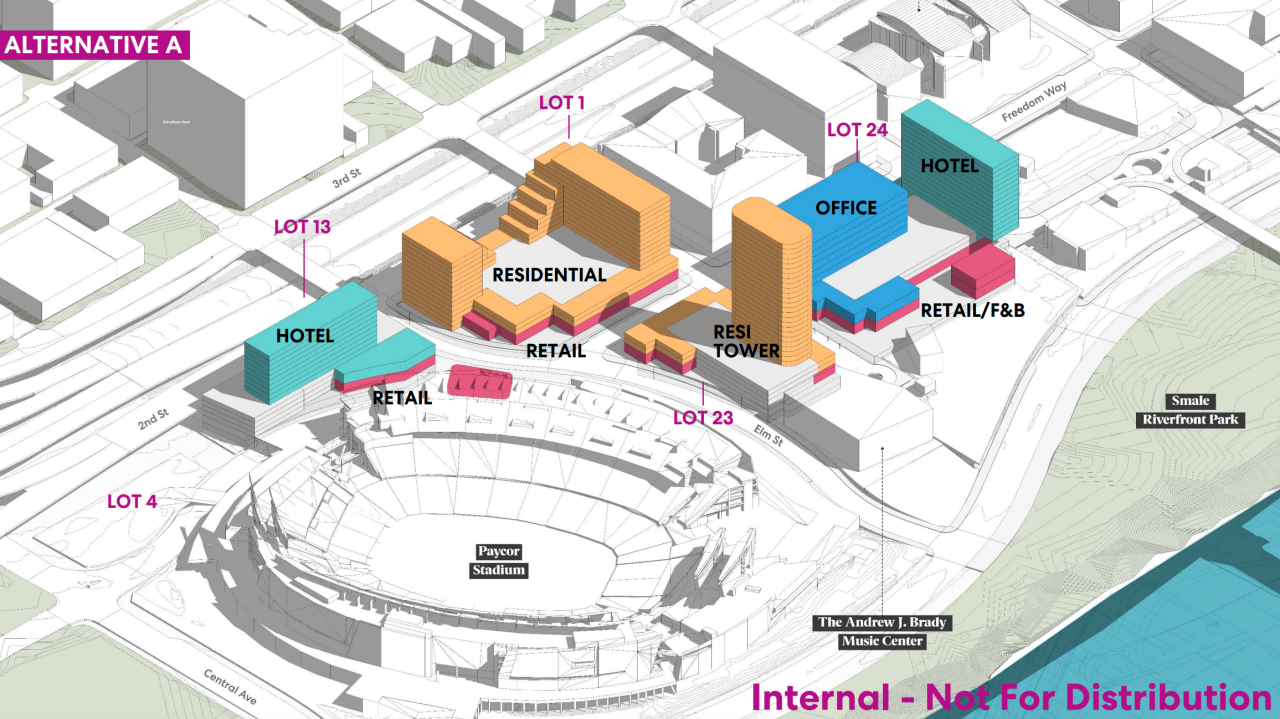
It is unclear whether height restrictions contained in the Cincinnati Bengals' lease with the county could allow the team to reject a proposed high-rise near Paycor Stadium, such as the luxury residential building shown in the June presentation.
Business owners have been pleading with elected leaders to develop the vacant lots after more than a decade of waiting in an effort to draw visitors to the riverfront when the Cincinnati Reds and Bengals aren’t playing home games.

Commissioners voted in April to hire two urban planning firms, Chicago-based Perkins & Will and Over-the-Rhine’s MKSK, to lead a planning process for The Banks to be built out.
The project is being overseen by an urban design steering committee that includes representatives from the city, county and stadium tenants.
WATCH: We talked to Mayor Aftab Pureval in May about what The Banks is missing
Documents obtained by our I-Team through public records requests shed light on how the process to reimagine The Banks took shape this summer.
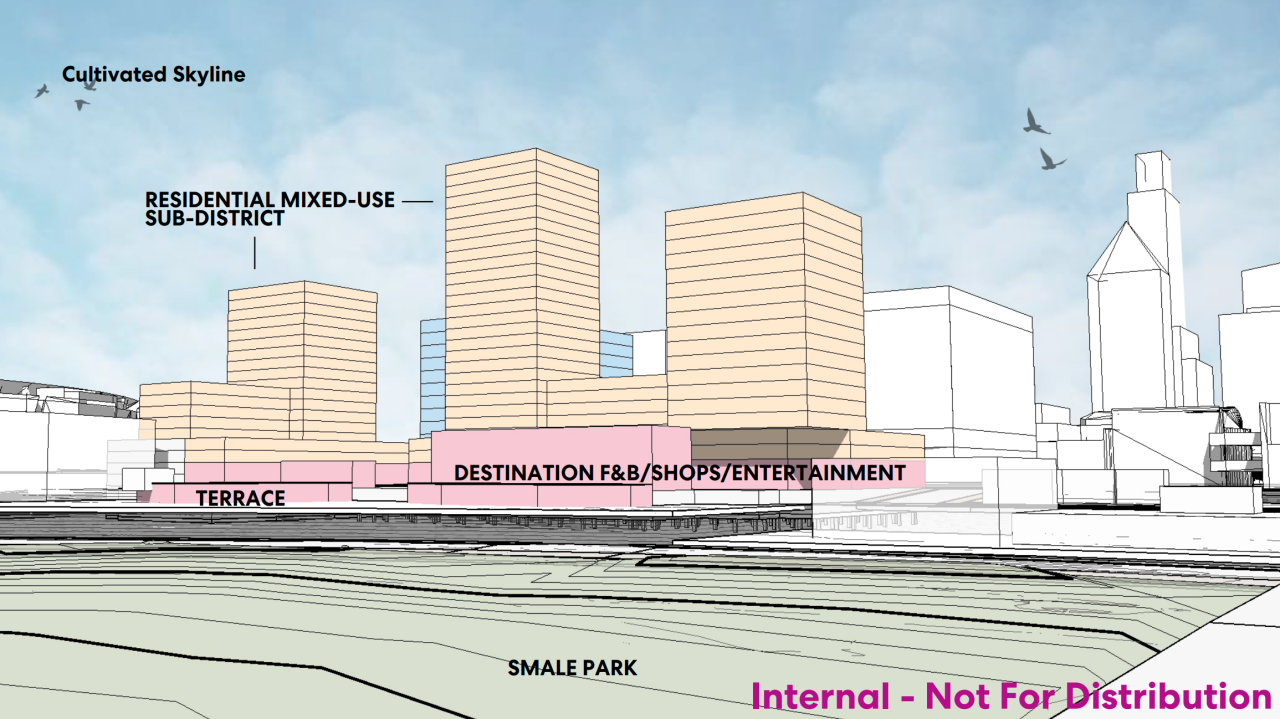
The consultants held a virtual meeting on June 9, attended by representatives from the National Underground Railroad Freedom Center, Heritage Bank Arena, the Brady Music venue, The Current & The Radius, The Filson, Yard House, 191 Rosa Parks, 180 Walnut, AC Hotel, Moerlein Lager House, the Bengals and the Reds.
The feedback from those stakeholders was reviewed at the June 24 meeting at Great American Ball Park.
“Safety: Top priority. There’s a ‘hands-off’ perception. More visible, human-scale policing (bike/foot patrols) is needed. Public realm: Maintenance issues, underutilized spaces, and need for consistent upgrades (e.g., synthetic turf, lighting, wayfinding). Freedom Way: Reimagining this street as a pedestrian boulevard or linear park emerged as a top ‘quick win,’” were the top recurring themes listed in the presentation.
Other themes included brand identity, connectivity and river access.

The biggest threats to The Banks were listed as “lack of coordination” or “lack of vision,” “current economic environment” or “lack of funding,” “public perception and willingness to take the necessary steps to enhance public safety,” and “fragmented/large stakeholder group” or “politics,” according to the June 24 presentation.
That presentation included a market study by HR&A, which suggested The Banks could add up to 1,210 units of high-rise, luxury, market-rate housing to fill a gap in the market. It also recommended building at least one new upscale or midscale hotel, up to 80,000 square feet of neighborhood retail, including grocery stores and cafes and adding diverse entertainment options from family-friendly activities to fine dining.
But the market study did not recommend adding new office space at The Banks, noting that the current office product is mostly vacant.
The presentation said “current market demand does not support speculative development,” and suggested it could be a potential later-phase development.

HR&A was set to begin a financial feasibility analysis of new development at The Banks in August, including public-private financing options.
The June 24 presentation also included a concept workshop by the design team, which suggested that different versions for filling the empty lots at The Banks could be used for residential, hotel, retail and entertainment purposes while maintaining skyline views from Paycor Stadium.
Some ideas included a Bengals fan plaza, converting Freedom Way into a pedestrian-first or pedestrian-only thoroughfare and a Freedom Center Park and riverfront Ferris Wheel.
Other suggestions included a new parking plan with wayfinding improvements and planting more trees for shade.
The Banks Urban Design Steering Committee is comprised of Billy Weber, Markiea Carter, Katherine Keough-Jurs, Marion Haynes, Holly Christmann, Kelly Adamson, Steve Johns, Roger Friedmann (he replaced former outside counsel Tom Gabelman), Phil Beck, Caroline Blackburn, and Phil Castellini.


